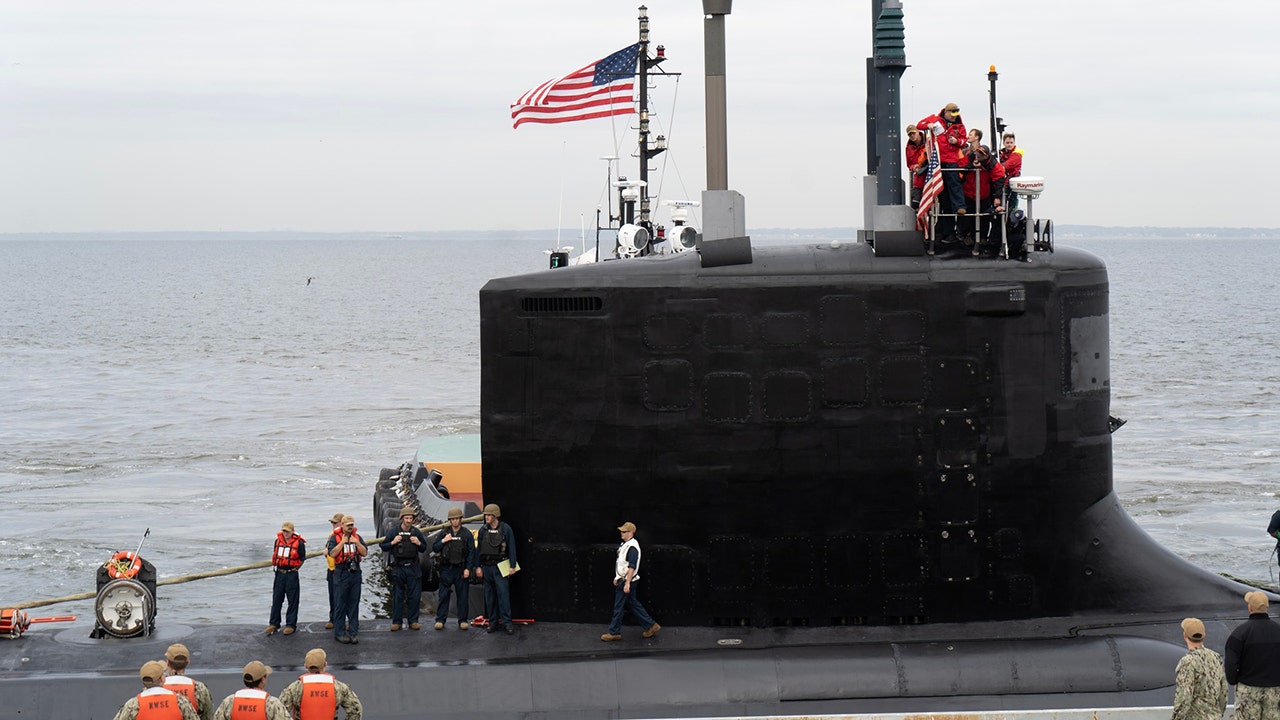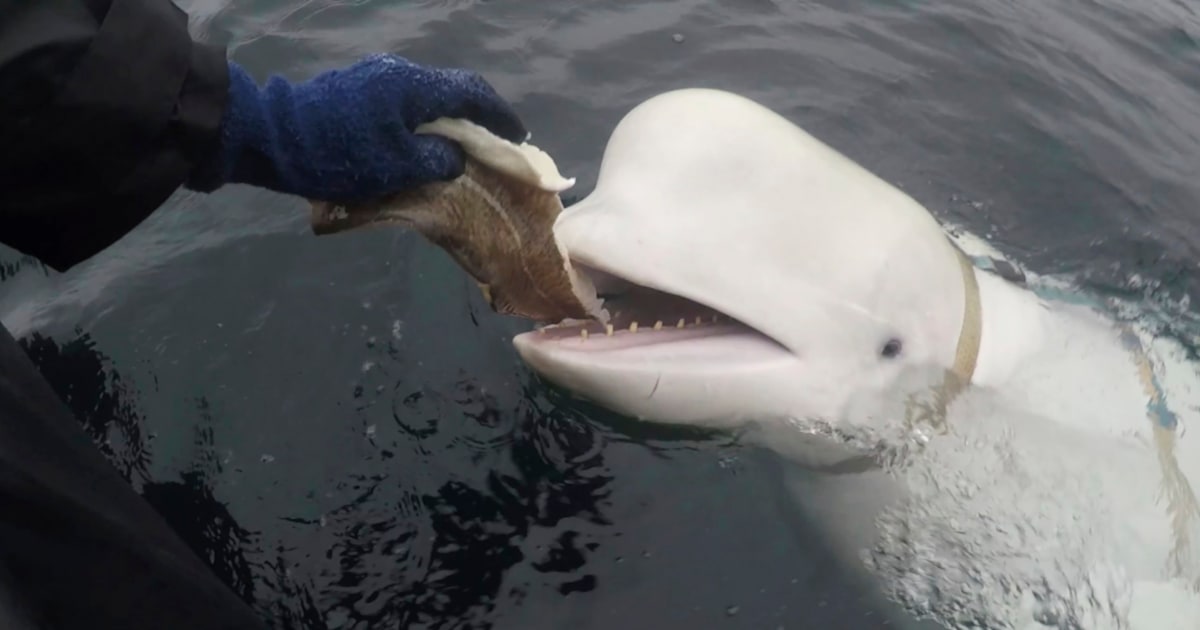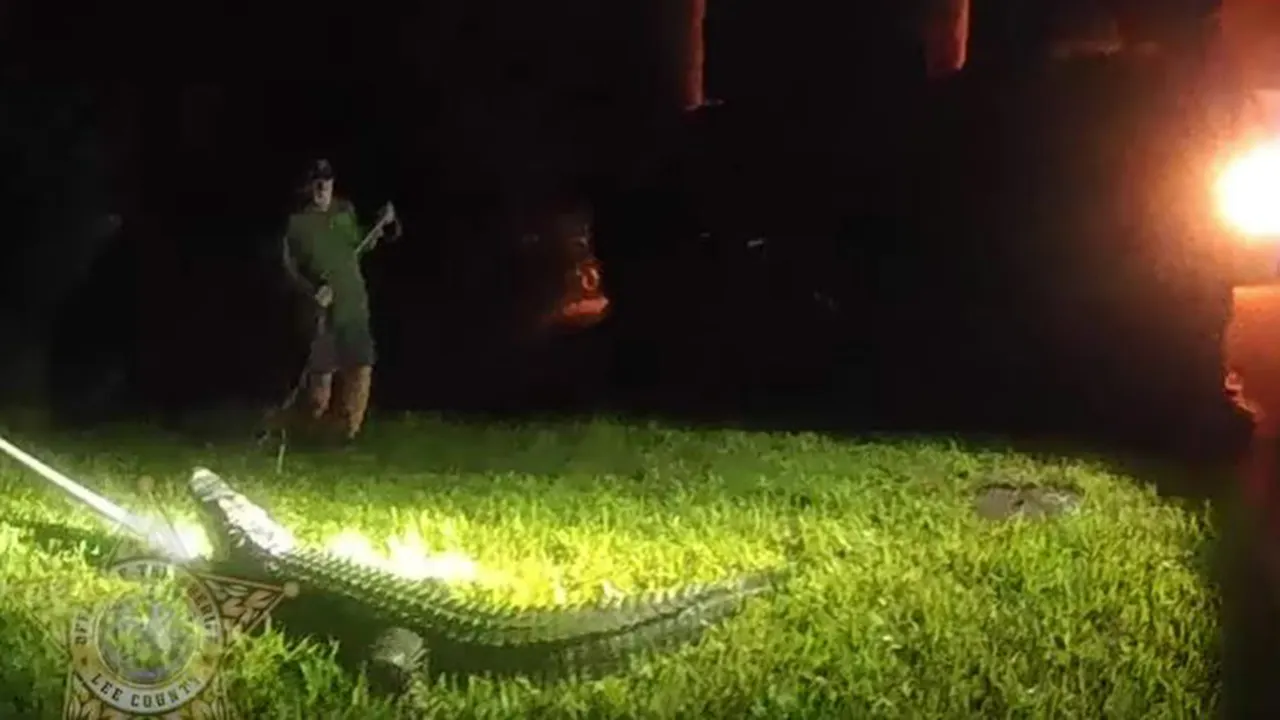For a supposed spy, Hvaldimir was anything but covert.
The white beluga whale had appeared regularly along the coast of Norway since it was first spotted in the country’s north in April 2019, wearing a harness and what appeared to be a mount for a small camera. Together with a buckle that read “Equipment St. Petersburg,” that prompted speculation that it was an escaped “spy whale” that had been trained for military purposes in neighboring Russia.
The whale seemed to love being around people and quickly captivated local residents, who came up with the name Hvaldimir — a combination of the Norwegian word for whale, “hval,” and the first name of Russian President Vladimir Putin.
The 14-foot, 2,700-pound whale was found dead Saturday in the harbor of Stavanger, a city in southwestern Norway, after having resided in the area since last year, the Norwegian Directorate of Fisheries said in a statement Monday.
Marine biologist Sebastian Strand, who had tracked Hvaldimir’s adventures for the nonprofit organization Marine Mind, said that he discovered the whale while he was out scouting for it and that he was “heartbroken.”
“He meant more than I can put into words, to me, to the team and to thousands of people whose lives he had profoundly impacted,” Strand said, adding that Hvaldimir was known to be alive as recently as Friday.
“We were responding to a sighting but did not know anything happened to him,” he said.
Strand said that Hvaldimir had only superficial injuries and that the cause of death was unclear. An autopsy was being performed Monday, the fisheries directorate said.
Even as residents speculated that Hvaldimir might be on a clandestine mission for the Kremlin, Moscow never claimed the alleged Russian operative as its own.
The military use of marine animals is well-documented.
Navies around the world, including those of the Soviet Union and the U.S., famously sought to tame cetaceans for spy missions during the Cold War, training them to retrieve underwater objects and detect mines and even take part in defense operations.
But Hvaldimir could also have been a therapy whale, according to other theories, which could explain his interest in people and responses to hand signals.
“It appeared as if Hvaldimir arrived in Norway by crossing over from Russian waters, where it is presumed he was held in captivity,” Marine Mind says on its website.
The whale’s solitude and behavior were atypical for its species, which generally moves in groups and inhabits remote Arctic areas. Hvaldimir was known to be a fan of catamarans around Norway, regularly following them from one fish farm to another, and hunting for food underneath the fishing nets.
“He has stayed close to fish breeding farms, and has been able to catch fish that graze on surplus feed from the farms,” the fisheries directorate said.
Over the years, Hvaldimir’s movements around densely populated areas had raised concerns about the risk of injury from boats and fishing gear.












